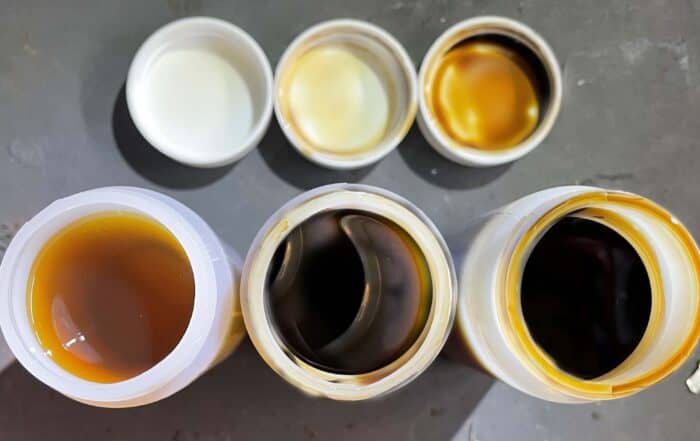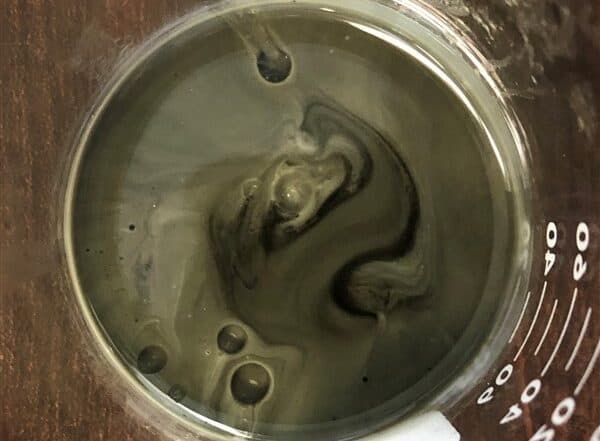The Silicon Question
What is silicon & is it a problem?
In one of the early years of our business, we were visited by a gentleman from another laboratory. I remember him standing in our lobby emphatically stating that the element silicon – when it appears in the spectrometry of oil – has one source and one source only: abrasive dirt.
He was wrong. Many people believe silicon only comes from dirt, but myriad sources of silicon exist. In oil analysis we look at elements rather than molecules, so silicone from harmless sealers and silicon (no “e”) from abrasive contaminants will both read as the elemental form of silicon. We use deductive reasoning to determine whether the silicon is abrasive or not, and sometimes the answer isn’t entirely clear just by looking at the data. In those cases we’ll cover all the bases and talk about the different sources of silicon and offer a variety of suggestions on how to proceed. Some forms of silicon will harm an engine, and others will not.
Harmless silicon
Silicone-based gasket sealers used in engine assembly and repair show up as high silicon in an oil sample. Any oil sample taken from a new, rebuilt, or repaired engine typically reads high in silicon. Oil from some types of new engines may contain as much as 400 ppm silicon. You can ignore the high silicon in these cases since it is harmless and will wash away by the third or fourth oil change.
Certain brands of engine oil and aftermarket oil additives contain silicon as an anti-foaming additive. The oils that use silicon as an additive can use up to 15 ppm of silicon or so, and we’ve seen silicon in aftermarket additives reading up to 850 ppm. It’s always important to let us know what oil brands and additives you’ve used so we can take that into consideration when writing your comments.
Your sampling procedure might introduce some silicon to the oil as well. The silicon might be from dirt around the drain plug or from a dirty collection pan if you’re dipping the sample out of the pan after you drain the oil. We’ve seen silicon read at several hundred ppm from using new plastic tubing or turkey basters to pump/collect samples. Silicon introduced in the sampling process is harmless to the engine internals.
Harmful silicon
Silicon can read high in an oil when coolant seeps into the oil system. It comes from silicon (rust) inhibitors used in the antifreeze. While the inhibitors aren’t necessarily harmful, the antifreeze certainly is, and you will want to seek repairs before the engine is seriously damaged.
Finally, there’s the abrasive form of silicon: dirt. Abrasive contamination causes poor wear in the cylinders, so if you see high silicon and poor cylinder wear, chances are good the silicon is abrasive. Check the air filter: Is it dirty? Installed properly? Check the seals and connections to make sure they’re properly sealed. Check the air box for rodent or insect nests, particularly if the engine hasn’t been started in a while. Look for cracks or leaks in the induction tubing. In aircraft engines, check the carb heat/alt air doors to ensure proper sealing.
Silicon has several possible sources in analysis. The more information we have about recent engine work, oil brands, aftermarket additives, and your sampling procedure, the easier it is for us to work with you to help determine whether the silicon is abrasive and what steps you should take to protect your engine. At Blackstone Laboratories, our analysts consider all these factors when making recommendations to help you prolong your engine’s life. In the end, that’s what it’s all about!
Related articles
TBN/TAN: Do You Need One?
What exactly is a TBN or TAN, and do you really need one?
Sampling Methods
Does it matter how you take a sample?
The Renuzit Experiment
Is ZDDP really necessary?
The Lower Unit Blues
Water contamination in a marine lower unit









